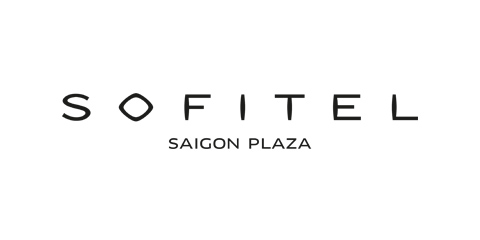Want to be in the loop?
subscribe to
our notification
Business News
FINANCIAL EMPOWERMENT FOR SMES
“The lack of transparency hardly creates confidence while credit is built on trust. Insufficient trust plus the lack of collaterals and an unfeasible business projects causes credit institutions to say 'No' to small and medium-sized enterprises (SMEs),” said Dr Vu Tien Loc, President of the Vietnam Chamber of Commerce and Industry (VCCI), at the Forum on Solutions to Boost Fund Sources for SMEs recently held by the Business Forum Newspaper in Hanoi.
Money still matters
Despite significant improvements in business environment in the last 30 years, money is still the biggest matter for SMEs in Vietnam, he said.
Vietnam is ranked 29th among 190 countries by credit access. In 2017, SMEs accounted for 21 per cent of total outstanding credit balance. Nevertheless, up to 60 per cent of SMEs have no access to capital sources. Among SMEs, startups do not have assets but business ideas and they need financial supports from the banking system to make money from their ideas.
The responsibility of making 60 per cent of SMEs inaccessible to credit sources is blamed to authorities (State Bank of Vietnam and relevant agencies), banks and SMEs themselves. The State lacks legal frameworks for creating financial channels for investors. State administration is still mechanical and risk-shy even in the time of the Industry 4.0. Land-use rights institutions impede enterprises from accessing bank loans,” Dr Loc said.
For banks and financial institutions, State-owned enterprises (SOEs) are still the priority of banks. Taking efficiency into account, banks prefer lending big sums to big corporates which can guarantee their borrowings with security assets. However, digital economy and start-up economy do not have many assets. Collateral-based loans still occupy a large share while performance-based lending has not become a mechanism or credit culture. How can we promote innovative start-ups?
On the enterprise side, Vietnam is home to about 670,000 enterprises, of which up to 98 - 99 per cent are SMEs. If over 5 million individual business units, micro and small enterprises according to economic concepts total nearly 6 million. So, almost all enterprises are small and micro. Among these nearly 6 million economic entities, only 2 million are registered, including 1.3 million individual entities and over 600,000 corporate entities. The rest is informally operational and typical of non-transparency. Even among 2 million registered entities, governance transparency is also a weakness for many.
Therefore, the lack of transparency hardly creates confidence while credit is built on trust. Insufficient trust plus the lack of collaterals and an unfeasible business projects causes credit institutions to say “No” to SMEs, said Dr Loc.
New loan methods needed
To open up capital flows for SMEs, the responsibility belongs to authorities, banks and SMEs together. On the one hand, institutions and bottlenecks in operation of financial entities and businesses need to be solved at the same time. To do this, it is necessary to deal with above issues. For its part, the State needs to more strongly reform policies and legal frameworks, facilitate lending in the era of Industry 4.0, and stimulate innovative start-ups. At the same time, it needs to have policies to strengthen interaction between enterprises and financial institutions.
He said, banks should make a greater effort to introduce new lending methods, direct funds for innovative start-ups and farmers based on their business ideas and plans. Credit and financial institutions and insurance companies need to interact to cover each other in supporting SMEs, promote credit-based microfinancing and apply information technology to reduce procedures.
At the same time, lending is suggested to base on supply chains. For example, loans are decided by crops, livestock or fields owned by borrowing farmers, or based on business plans rather than factories because these facilities are hardly available in agricultural production.
Investment is not risk free, said Dr Loc. This requires efforts of the banking system. Banks not only lend enterprises but the former also advise and support the latter. Banks have the advantage of connecting and leading partners for target enterprises in business investment. If both banks and enterprises interact, open up capital sources, create development motivations and reduce risks for both sides.
To fundamentally change this symbiotic relationship, enterprises need to be transparent and banks must raise their levels to have better interrelationship.
SMEs must ensure transparency. In the era of international integration and Industry 4.0, transparency is the most important in addition to enhancing governance. Vietnam is ranked among the 20 most entrepreneurial economies in the world and it is also among 20 economies capable of realising lowest start-up ideas. As a result, SMEs need to improve their governance capacity, which is aligned with transparency as the first important benchmark in accessing bank loans and financial institutions.
Mr Nguyen Quoc Hung, Director of the Credit Department, SBV
By consistently carrying out supporting measures, enabling SMEs to access credits for business development, and growing outstanding credit for SMEs in the past years and in the first half of 2018, credits for SMEs produced certain results. As of June 30, 2018, outstanding loans to SMEs nationwide reached VND1,402.89 trillion (US$60 billion), up 4.48 per cent from the end of 2017 and equal to about 21 per cent of total outstanding loans of the economy.
Credits for SMEs have steadily increased in recent years and basically met financial demands of SMEs qualified for borrowing at banks. According to the State Bank of Vietnam, over 270,000 SMEs have outstanding loans at credit institutions.
To facilitate SMEs to access capital sources, authorities should soon complete legal documents (decrees and circulars) guiding the Law on SME support, ensure that SME support policies are enforced in concert and effectively. Provincial/Municipal People’s Committees should actively apply SME support regulations specified in the Law on SME Support and guidance from central authorities and closely work with banks to implement bank - business connection programmes in order to jointly solve difficulties in land, tax and infrastructure when enterprises access loans for business development.
Particularly, business associations should enhance their role and influence to act as bridges for SMEs to approach credit institutions, provide SMEs with market information, trade promotions and exhibitions and protect legitimate rights and interests of their members.
Finally, SMEs must also self-perfect, comply with laws and actively provide full and honest information to enhance their prestige to credit institutions, join manufacturing activities along value chains, and allow credit institutions to control their cash flows and financial situations during the borrowing term.
Dr Can Van Luc, Economist
Some credit institutions lack interest in SME customers, partly due to low profit margin (caused by upper-limit lending interest rates) while risks and operating costs are high. In addition, ineffective coordination between the SME Credit Guarantee Fund and credit institutions (in appraisal, collateral receipt, obligation guarantee, risk treatment) is another cause.
In SME funding forms, attention should be paid to their unfamiliar forms like share issue, bonds issue and financial lending. Accordingly, it is necessary to effectively issue and execute legal documents guiding the enforcement of the Law on SME Support while strengthening the role of SME associations and cooperation between credit institutions and credit guarantee funds.
The Government, the Ministry of Finance, the State Bank of Vietnam and related business associations effectively and consistently carry out the Law on SME Support and other support policies (supporting industries, agriculture and rural development); and strengthen the operation of the SME Guarantee Fund in collaboration with credit institutions, associations, local authorities and SME development funds. In particular, consideration should be given to the mechanism of capping lending rates for SMEs, building market and product information systems, SME support partners and developing business information systems.
Financial institutions necessarily design specific credit products and processes tailored for SMEs; develop credit supply chains and cooperate with large enterprises to finance SMEs; enhance cooperation effectiveness, coordinate with funds, especially the Credit Guarantee Fund and SME Development Fund, to share information and connect enterprises.
Dr Nguyen Thi Hien, Deputy Director of Banking Strategy Institute, SBV
There are two existing issues that impede SMEs from accessing capital. Firstly, SME performance is not high and the share of loss-making SMEs is higher than that of larger firms.
Secondly, they are weak at information governance, reporting system, and information transparency. Therefore, the time needed to appraise borrowing requests is longer.
For banks, credit products are worthy. In addition, many organisations have applied the same credit granting and credit scoring processes. Therefore, they should change their views on risk tolerance of SMEs.
Notably, with the current diverse structure, Vietnamese credit institutions can provide credit to more borrowers. As a result, more SMEs can access bank loans.
Enterprises need to clarify information, improve operating quality, enhance management capacity, and have good business plans to have an easier access to credit sources. Banks should make an effort to develop appropriate products, improve credit scoring methods, and have appropriate credit packages for each target group.
Source: VCCI
Related News

A STELLAR CHRISTMAS AT SOFITEL SAIGON PLAZA
Experience the magic of year-end celebrations in five-star luxury, where Parisian elegance meets Saigon’s festive vibrancy. Discover your Stellar Christmas moments: https://sofitel-saigon-plaza.com/festive-offer-2025

CONSTRUCTION SECTOR POSTS OVER 9% GROWTH IN 2025
Industries under the ministry’s management accounted for an estimated 17.23% of national gross domestic product (GDP), up about 0.17 percentage point from 2024. They contributed around 1.96 percentage points to overall GDP growth, reported the Vietnam News Agency. The contribution helped push Vietnam’s economic growth to above 8% in 2025 and supports the Government’s aim of pursuing double-digit growth in the coming years.

VIETNAM PUTS PUBLIC INVESTMENT DISBURSEMENTS AT VND603.6 TRILLION
Vietnam’s public investment disbursements had amounted to VND603.6 trillion in the year to December 18, equivalent to 66.1% of the plan assigned by the prime minister. According to the Ministry of Finance, actual disbursements by December 11 had totaled VND577.7 trillion, or 63.3% of the prime minister-approved plan of VND913.2 trillion, the Vietnam News Agency reported.

SHINE INTO 2026 AT HOIANA RESORT & GOLF!
This New Year’s Eve, celebrate where the sea meets the sky. Vibrant performances, festive dining, DJ beats, live bands and dazzling fireworks come together for one unforgettable night. From beachfront countdown moments to curated New Year’s Eve dinners across Hoiana, every detail is designed to welcome 2026 in style.

VIETNAM’S TRADE SET TO SURPASS US$900 BILLION FOR FIRST TIME
Vietnam’s total import-export turnover is expected to reach about US$920 billion by the end of the year, marking the first time the country’s trade value has exceeded the US$900-billion mark. As of December 15, Vietnam’s total trade turnover stood at US$883.7 billion, according to the Agency of Foreign Trade under the Ministry of Industry and Trade.

GLOBAL SOURCING FAIR VIETNAM 2026 – THE TRULY GLOBAL B2B SOURCING SHOW IN VIETNAM TO EXPAND & DIVERSIFY YOUR EXPORT MARKETS WORLDWIDE
The 4th edition of Global Sourcing Fair Vietnam returns in 2026 with an impressive scale, featuring 700 booths showcasing Fashion & Accessories, Home & Gifts, and the newly introduced Printing & Packaging Products from 500+ verified suppliers across Vietnam and Asia – including Mainland China, Taiwan, Hong Kong SAR, South Korea, India, Bangladesh, ASEAN, and more.
























